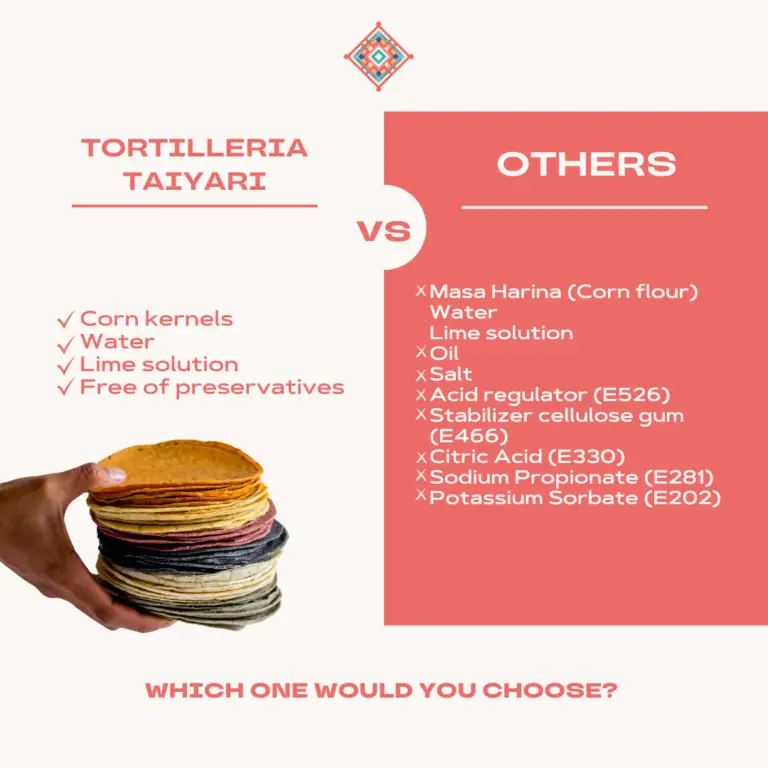
In the world of Mexican cuisine, tortillas are more than just a staple—they are a cultural symbol, a canvas for culinary creativity, and a testament to ancient food practices. However, not all tortillas are created equal. The difference between tortillas made from nixtamalized corn and those made from masa harina (corn flour, most know as “Maseca”) is significant! In terms of flavor, nutritional value and cultural importance.
Let’s explore these differences and understand why preserving the nixtamalization process is crucial.
Nixtamalization is a traditional Mesoamerican process that involves soaking and cooking dried corn kernels in an alkaline solution, usually limewater (calcium hydroxide), and then hulling the kernels. This process transforms the corn into nixtamal, which is then ground to make masa, the dough used for tortillas.
Nixtamalization is a traditional Mesoamerican process that involves soaking and cooking dried corn kernels in an alkaline solution, usually limewater (calcium hydroxide), and then hulling the kernels. This process transforms the corn into nixtamal, which is then ground to make masa, the dough used for tortillas.
Masa harina, or corn flour, is a more modern alternative to traditional nixtamal. It is made by drying and grinding nixtamalized corn into a fine powder. While masa harina offers convenience, allowing for quick and easy tortilla preparation, it comes with certain trade-offs.
In a rapidly modernizing world, it is essential to balance convenience with the preservation of traditional practices. Nixtamalization is more than just a method of preparing corn; it is a link to the past, a testament to human ingenuity, and a cornerstone of our cultural identity. By continuing to practice and promote nixtamalization, we can:
The difference between nixtamalized corn tortillas and those made from masa harina is profound. While masa harina offers convenience, it cannot fully replicate the rich flavor, nutritional benefits, and cultural significance of tortillas made from fresh nixtamal. By preserving and promoting the nixtamalization process, we honor a timeless culinary tradition and ensure that future generations can enjoy tortillas that are as rich in history as they are in flavor.
At Tortilleria Taiyari, we pride ourselves on crafting tortillas the traditional way, using only the traditional nixtamalisation process and 3 ingredients: corn kernels, water, and lime solution—completely free of preservatives.
Compare that to others using masa harina and a long list of additives. Which one would you choose for your table?
